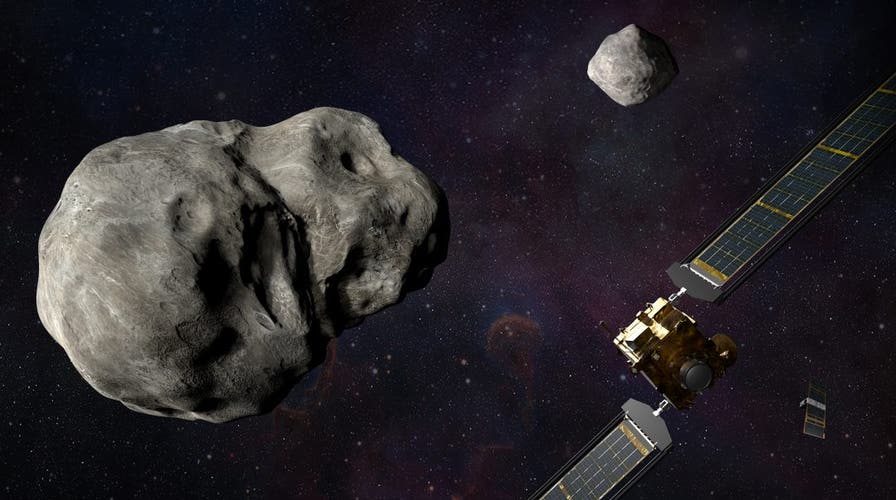Fox News Flash top headlines for June 25
Fox News Flash top headlines are here. Check out what's clicking on FoxNews.com.
The space object that NASA is going to slam with a spacecraft in a few years to test its planetary defense systems finally has an official name.
Previously known as Didymos B, the object will now be known as Dimorphos (Greek for "having two forms"), after the International Astronomical Union approved the new name earlier this week.
"The name of the moon was suggested by Kleomenis Tsiganis, a planetary scientist at the Aristotle University of Thessaloniki and a member of both the [Double Asteroid Redirection Test (DART)] and Hera teams," the IAU said in a statement. "He explains that the name Dimorphos 'has been chosen in anticipation of its changes. It will be known to us in two very different forms, the one seen by DART before the impact, and the other seen by Hera a few years later.'"

Illustration of NASA’s DART spacecraft and the Italian Space Agency’s (ASI) LICIACube prior to impact at the Didymos binary system. (Credits: NASA/Johns Hopkins APL/Steve Gribben)
NASA ASTEROID DEFENSE TEST MISSION MAY TRIGGER ARTIFICIAL METEOR SHOWER, STUDY FINDS
Dimorphos is considered a moon to the asteroid Didymos.
Double Asteroid Redirection Test (DART) is the first mission developed for NASA’s Planetary Defense Coordination Office, which was established in 2016, "and one piece of NASA’s wider planetary defense planning," the space agency wrote in a separate statement.
The current plan is for DART to launch aboard a SpaceX rocket in the middle of 2021, ultimately crashing into Dimorphos toward the end of 2022.
'DOUBLE ASTEROID' ZOOMING BY EARTH AT 43,000 MPH CAPTURED IN AMAZING PHOTO
The European Space Agency, which is aiding NASA in its asteroid deflection plan, compared the size of Dimorphos to Egypt's Great Pyramid, noting it is about 160 meters (525 feet) in diameter. In contrast, the larger Didymos is approximately 2,560 feet wide -- both are considered "potentially hazardous" near-Earth objects.
According to a 2018 report put together by Planetary.org, there are more than 18,000 NEOs.
The ESA is building the Hera spacecraft, which will visit the Didymos asteroid system, assuming DART successfully crashes into Dimorphos. If successful, Hera would launch in 2024 and arrive by 2026 to inspect the findings.
ANCIENT ASTEROID STRIKES ON MARS MAY HAVE 'PRODUCED KEY INGREDIENTS FOR LIFE'
NASA unveiled a 20-page plan in 2018 that details the steps the U.S. should take to be better prepared for NEOs, such as asteroids and comets that come within 30 million miles of the planet.
In April 2019, NASA Administrator Jim Bridenstine said that an asteroid strike is not something to be taken lightly and is perhaps Earth's biggest threat.

